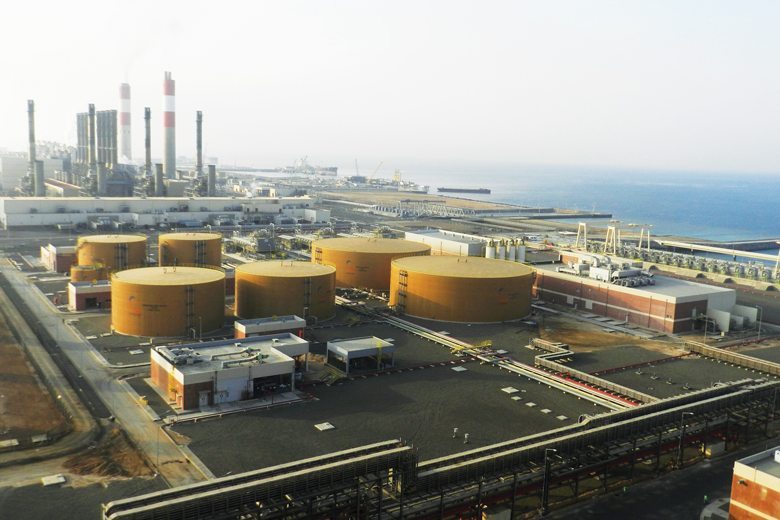

The kingdom now needs to bring the first power and water assets to the market to ensure confidence in its strategy
Saudi Arabia is pushing ahead with plans to privatise large swathes of its electricity and water sectors as part of wider efforts to reform its economy.
While the plans were first launched a decade ago, moves to reduce the governments role in providing utilities for its people have been stepped up since the fall in oil prices and the launch of the ambitious Vision 2030 development programme.
Since the kingdom has the regions largest power and water sectors in 2015 it had an installed generation capacity of 81.6GW and a desalination capacity of 7.3 million cubic metres a day (cm/d) it is no surprise Riyadh is targeting developers and investors from around the world to participate in the privatisation programme.
SEC restructuring
Plans to privatise the generation assets of Saudi Electricity Company (SEC) are the most advanced. Preparations to unbundle and sell SECs assets began in 2007, with the final set-up approved in 2010. Under the Electricity Industry Restructuring Plan, SEC will be split into four generation companies, a distribution firm and a national grid company, which was the first entity to be unbundled on 1 January 2012.
The privatisation programme has fallen well behind its original timeline; SEC had set a target of creating the generation and distribution firms by the start of 2014, and was planning to have completed the liberalisation of the market by the end of 2016.
However, the drive to integrate the private sector into the kingdoms utilities has been given fresh impetus by Crown Prince Mohammed bin Salman, following the launch of Vision 2030 and the 2020 National Transformation Programme in 2016.
A significant milestone was achieved in June this year, when Riyadh created the principal buyer for electricity. Saudi Company for Energy Purchase has been established as a limited liability firm wholly owned by SEC, with a start-up capital of SR2m ($530,000) and a board of seven directors. The first CEO is Osama bin Abdulwahab Khawandanah, who has been senior vice-president of energy trading and ventures at SEC since September 2016. The primary role of the principal buyer will be to purchase and sell electricity; to purchase fuel to supply to generation firms that have signed agreements with the buyer; and to import and export power.
Progress is also being made with unbundling the first generation company (Genco), which is expected to have a capacity of 15-20GW. The generation firms are likely to hold a range of assets based on technology and size, rather than on specific geographic areas. The target is for the first Genco to reach the market by the end of 2017, Abdullah al-Shehri, governor of the Electricity Cogeneration & Regulatory Authority (Ecra), told MEED earlier this year.
Water assets
The countrys desalination provider, Saline Water & Conversion Corporation (SWCC), is also finally moving ahead with plans to unbundle its assets. Riyadh first issued a decree to privatise SWCC in 2008, but it was only following a shake-up of the organisation in late 2016 and the appointment of a new governor that SWCC in May launched a roadmap for selling off its assets.
SWCC is aiming to update its privatisation strategy and resolve environmental issues by the end of 2017. It plans to have started the process of establishing the unbundled firms, drawing up commercial agreements and migrate assets and employees by the end of the third quarter of 2017, and wants to finish the process by the end of the first quarter of 2019. In the second quarter of 2018, SWCC will begin the process of preparing assets for sale, and the sale of the first assets will begin in the fourth quarter of 2018.
SWCC kick-started its privatisation programme in June, when it invited consultants to submit bids for the advisory role on the sale of its Ras al-Khair plant. According to sources close to the firm, the privatisation of the plant is being fast-tracked, and is intended to act as a trailblazer for the privatisation of the rest of SWCCs assets. Financial consultancies and legal firms submitted bids in late July to work on the planned transaction.
While the sell-off of the kingdoms major utility assets has drawn interest from around the globe, many investors are awaiting further details on the asset packages and structures before they make offers.
So far, I would say international interest has been lukewarm, says a lawyer close to the programme. They [investors] need to understand the structure and there is very little information available so far. I was in Japan recently at a roadshow and there wasnt great interest yet.
One of the areas needing further clarification is what Riyadh plans to do with its oldest assets. Ecra in 2009 estimated that more than half of SECs 662 power generating units were more than halfway through their life, while some 200 units would have to be classified as old in the period 2009-15. Moreover, by 2015, an estimated 5,000MW of existing capacity would be more than 35 years old and have to be retired.
While developers will have been encouraged by the progress made over the past 12 months, Riyadh needs to bring the first assets to the market to assure potential investors its privatisation plans are finally ready to be turned into action.
You might also like...

Alstom wins Jeddah airport deal
18 April 2024

Chinese contractor to build 86-storey tower in Dubai
18 April 2024

Japan and UAE to explore clean energy cooperation
18 April 2024

Contract awarded for Algeria steel project
18 April 2024
A MEED Subscription...
Subscribe or upgrade your current MEED.com package to support your strategic planning with the MENA region’s best source of business information. Proceed to our online shop below to find out more about the features in each package.



